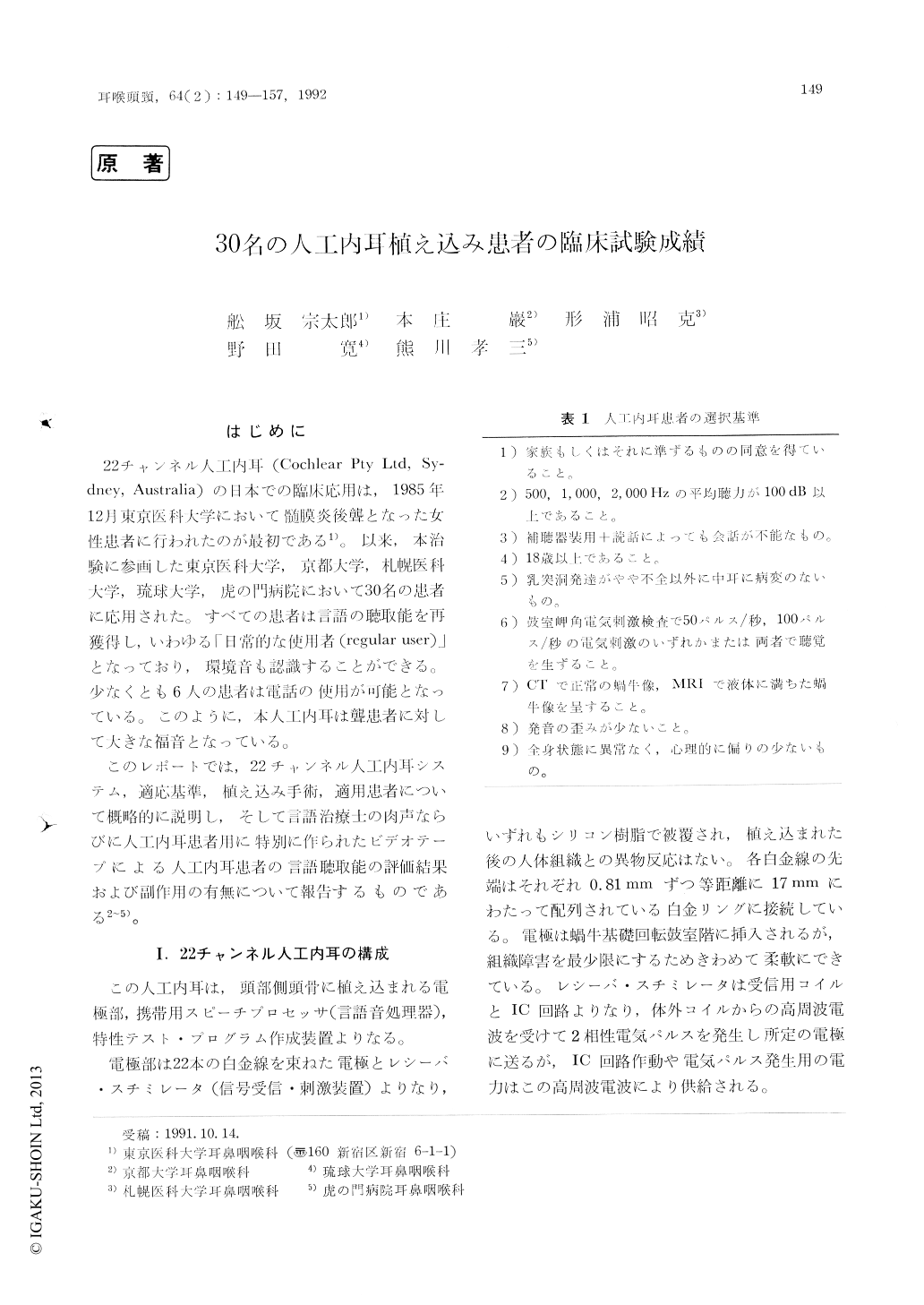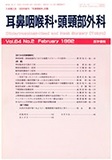Japanese
English
- 有料閲覧
- Abstract 文献概要
- 1ページ目 Look Inside
はじめに
22チャンネル人工内耳(Cochlear Pty Ltd,Sy-dney,Australia)の日本での臨床応用は,1985年12月東京医科大学において髄膜炎後聾となった女性患者に行われたのが最初である1)。以来,本治験に参画した東京医科大学,京都大学,札幌医科大学,琉球大学,虎の門病院において30名の患者に応用された、すべての患者は言語の聴取能を再獲得し,いわゆる「日常的な使用者(regular user)」となっており,環境音も認識することができる。少なくとも6人の患者は電話の使用が可能となっている。このように,本人工内耳は聾患者に対して大きな福音となっている。
このレポートでは,22チャンネル人工内耳システム,適応基準,植え込み手術,適用患者について概略的に説明し,そして言語治療士の肉声ならびに人工内耳患者用に特別に作られたビデオテープによる人工内耳患者の言語聴取能の評価結果および副作用の有無について報告するものである2〜5)。
This paper reports a clinical evaluation on 30 deaf patients with cochlear implant (Cochlear Pty.), on whom the cochlear implantation has been performed at Tokyo Medical College, Kyoto University, Sapporo Medical College, University of the Ryukyu and Toranornon Hospital since 1985.
Average rates of speech sound perception for vowels and consonants were 100% and 81% res-pectively, in the condition of cochlear implant in addition to lipreading. The Speech Tracking Test score was 23 Bunsetsues per minute in an average. Speech sound perception tests were performed using video-taped materials for monosyllables, words and sentences. Correct responses were 43% on monosyllables, 40% on words and 48% on sentences for cochlear implant with lipreading condition. No adverse effects were observed, and it has been concluded that the cochlear implant is useful for the deaf patient.

Copyright © 1992, Igaku-Shoin Ltd. All rights reserved.


